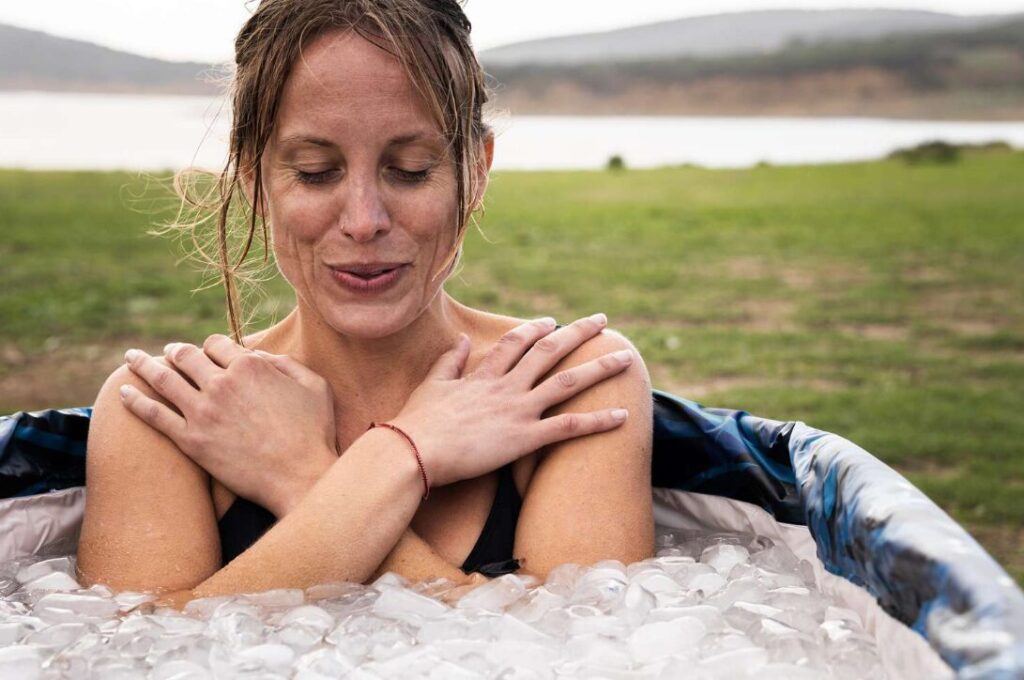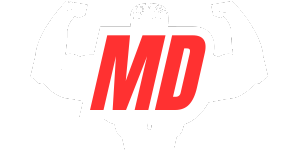When in cold exposure, your blood vessels get smaller, and less inflammatory cytokines are released. It helps reduce inflammation. Timing is important for muscle growth, so don’t use cold therapy right after a workout because it might mess up signals for hypertrophy.
For the best results, wait 3 to 4 hours after training to expose yourself to cold, use water that is 50 to 59 degrees Fahrenheit for 10 to 15 minutes, and do it only 2 to 3 times a week. Strategic implementation strikes a balance between managing inflammation and building muscle.
The Science Behind Cold-Induced Anti-Inflammatory Responses
When your body gets cold, it sets off a chain reaction of physiological responses that have a direct effect on inflammation pathways. The cold quickly tightens blood vessels near your skin, which slows blood flow to the tissues that are affected and stops the release of pro-inflammatory cytokines.
During this process, your immune response changes a lot. When your body temperature drops, certain immune cells change how they work, which lowers the amount of inflammatory chemicals they make. This anti-inflammatory response helps keep the natural inflammation that happens after a lot of exercise or an injury under control.
Cold exposure also causes the release of norepinephrine, which helps control the immune system even more. This hormone helps keep cytokine levels in check, which stops too much inflammation while still allowing healing to happen. When you are cold, your body’s metabolism slows down for a short time, which gives it a chance to reset its inflammatory signals.

Metabolic Adaptations Following Regular Cold Exposure
Consistent exposure to cold temperatures causes major metabolic changes that go beyond just controlling inflammation. It is different from occasional cold therapy. When you regularly put your body under cold stress, it may help you recover by increasing the number of mitochondria and the body’s ability to burn fat. It may also help you keep your energy levels up so you can grow muscle.
Studies show that these changes may actually help you reach your hypertrophy goals if you do them at the right time. The body can adapt by increasing the levels of certain growth factors. When these factors are in sync with training, they may help muscle growth instead of hindering it.
Acute cold exposure lowers inflammation for a short time, but these long-term changes may make your body better able to handle the stress of training, making it easier for you to make progress over time and reducing the amount of time you need to recover between sessions.

Timing Your Cold Therapy to Get the Right Balance Between Recovery and Hypertrophy
The best way to balance the benefits of recovery with the goals of muscle growth may be to carefully time when you expose yourself to cold. If you want to build muscle, don’t use cold therapy right after your workout. It could mess with important hormone regulation and exercise adaptation signals that tell your body to repair muscle. Instead, wait at least 3–4 hours after working out before exposing yourself to cold to let the initial growth pathways kick in.
You can use cold therapy sooner for sessions that are more about performance than growth. If your main goal is to deal with very sore muscles, being cold for 1 to 2 hours after working out can help a lot without completely stopping adaptation.
Keep in mind that cold therapy has a range of effects. Short exposures (less than 5 minutes) have the least effect on recovery while still reducing inflammation and speeding it up.

Balancing Recovery and Hypertrophy
To use cold therapy successfully, you need to find the right temperature, length of time, and frequency for your own recovery needs. Don’t go full ice bath. Keep the water cool, about 50–59°F (10–15°C). It’ll help with soreness and inflammation without killing the muscle-building signals you worked so hard for. You should only immerse yourself for 10 to 15 minutes at a time.
It is long enough to lower inflammatory markers but short enough not to slow down recovery adaptations.
Frequency is also important. When dealing with acute inflammation, schedule cold exposure right after high-intensity workouts. But avoid doing it after workouts that focus on hypertrophy.
For ideal recovery protocols, consider using cold therapy 2-3 times weekly rather than daily, allowing your body to benefit from both the anti-inflammatory effects and the natural adaptive responses to training stress.
Comparing Cold Exposure to Other Recovery Methods
When athletes think about how to recover, they often have to choose between modern cold therapy and older methods like massage, compression garments, and active recovery. Studies show that being cold is better at reducing acute inflammation and pain, while massage may be better at helping tissue heal by increasing blood flow.
Cold therapy changes how your body reacts to training, while compression clothes only provide passive support. Studies show that using both methods together might work better. For example, you could use cold exposure to reduce inflammation right away and then active recovery to help muscles get more nutrients. Your goals are also important. If getting rid of pain quickly is your top priority, cold therapy is the best choice.
If building muscle is your top priority, limit your exposure to cold immediately after your workout so it won’t interfere with the cellular signals your muscles need for hypertrophy.
Frequently Asked Questions
Does being cold affect the hormones that help muscles grow?
Yes, cold exposure can temporarily reduce testosterone and growth hormone levels, potentially limiting your muscle growth. But short sessions of cold after a long enough time after working out can help reduce these bad hormonal effects.
Can cold therapy help you sleep better after a hard workout?
Yes, cold therapy can help you sleep better after a hard workout by lowering your core body temperature, reducing pain and inflammation, and calming your nervous system. All of these things help you sleep more deeply and rest more restorative.
How does being cold affect when you eat after working out?
Exposure to cold can slow down digestion and nutrient absorption, so wait one to two hours after your post-workout meal before doing cold therapy. If you eat right after your cold session, on the other hand, you’ll get more nutrients.
Do genetics have anything to do with how well cold therapy works?
Yes, the results of cold therapy depend on your genes. Some people have ACTN3 and UCP genes that affect how well they can handle the cold, how well they can generate heat, and how well they respond to inflammation. Your unique genetic makeup will affect how you respond.
Can being in the cold help with asthma symptoms that happen when you exercise?
Yes, being cold can help ease asthma symptoms that happen during exercise by reducing inflammation and constriction in the airways. Cold therapy before workouts that usually cause symptoms will probably help you breathe better.



